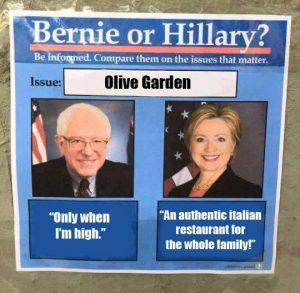Author: Kumars Salehi
Adorno.
As every conservative freakout over the Frankfurt School reminds us, there is an alternate timeline on the American right where these German Jewish Marxists, who fled to California from Hitler’s Germany, got everything they ever wanted and a lot they didn’t. This article is not about about that, although other articles are.
The interesting question isn’t whether the Frankfurt School changed the way we think about the relationship between politics and culture, but whether—by helping us to explain it—they still could.
When something bad happens in my life, I usually think, “Adorno would have seen this coming.” Election day was no exception. So I was glad to see The New Yorker corroborate my suspicion with a December 5 essay by Alex Ross titled “The Frankfurt School Knew Trump Was Coming.” Ross saw in the election of Donald Trump something in the way of vindication for these intellectuals, particularly Theodor W. Adorno, the arch-curmudgeon of Marxist philosophy known to Twitter users as the avatar and general inspiration for the @NeinQuarterly account run by former University of Pennsylvania German professor Eric Jarosinski:

Today there’s a reasonable case that Adorno stands as the most prescient left-wing intellectual of the 20th century, certainly in the German tradition. “As early as the forties, Adorno saw American life as a kind of reality show,” Ross writes, referring to his studies of fascistic tendencies in American society while in exile. The Frankfurt School brand of Marxist theory looks to culture for explanations of how ideology shapes our thinking and limits the scope of our politics. For Adorno, the mass media most ripe for critique were film and television. Today we might say the most relevant place to look for ideology in the world of culture is online, on social media:
What Adorno identified as the erasure of the ‘borderline between culture and empirical reality’ is endemic on social media. The failure of Facebook to halt the proliferation of fake news during the campaign season should have surprised no one; the local hirelings of logic are too enamored of their algorithms—and of the revenue they generate—to intervene.
But who gets to decide which news is fake? Adorno would probably cringe at the very term “fake news,” with its implication that most media outlets present news that is, in a distinct and meaningful sense, “real.” In fact, the main takeaway of Adorno’s famous “culture industry” theory is that mass media doesn’t lead to critical thinking and resistance—on the contrary. Every song, every movie is embedded in ideology, the cookie-cutter frame of our thoughts that shapes our interpretation of events and restricts our ability to think beyond what we believe exists.
“Film, radio, and magazines form a system,” he and Max Horkheimer write in their canonical Dialectic of Enlightenment. “Each branch of culture is unanimous within itself and all are unanimous together. Even the aesthetic manifestations of political opposites proclaim the same inflexible rhythm.” All “news” is, in a way, fake news—not because a bunch of entertainment execs are conspiring to brainwash us, but because we all make sense of the world through stories that are always partial and never complete. No matter how accurate we think our perspective is, in structuring our experience ideology inevitably leaves something out.
Chief among Adorno’s concerns is that in the culture industry, what gets left out is an understanding not only of the real mechanisms of power in society, but also of the possibility that those mechanisms could be changed. Submission in the realm of culture prepares us to be submissive in the realm of politics.
The culture industry’s authoritarian function permeates every level of its existence, down to how a specific text is constructed. Each product is as standardized as the desires of the consumers it appeals to. It’s important to remember that Adorno is basing his analysis off of his observations in the US: The supposedly free citizens of liberal democracy seek refuge from the assembly line in entertainment, only to find their subordination to formulaic repetition reflected back into them in a sort of Fordism of the mind that, year after year, keeps the same basic tropes and narratives coming down the assembly line.
Nearly two decades later, in his essay “Transparencies on Film” in the German newspaper Die Zeit, Adorno reveals he’s lightened up a bit. His issue now is that cinema is coercive and dangerous because of its very essence as a medium. He points to film’s dependence on movement, and the “collectivity” of how people experience the inexorable sequence of moving images that defines a film: “The movements that it depicts are mimetic impulses. Prior to all content and concepts, these movements incite the viewers and listeners to move along with them.”
What Adorno means by “mimetic impulses” is that watching a movie necessarily entails that the viewer submit to and follow along with the flow of images, including to the ways those images manipulate us by seeming to alleviate our loneliness, and to satisfy deep-seated emotional drives otherwise unfulfilled by our fragmented social lives. Whether we think we know better or not, the ideas we come out of the movie theater with are ideas about what’s wrong with the world and how to make it better.
In this essay, Adorno departs from his usually dismissive pessimism to offer a glimmer of hope that film may be able to counteract its manipulative tendencies—to throw the reproduction of ideology out of sync, and point beyond it—by expressing, visibly and concretely, the inner life of the modern individual, their stream of consciousness. In capitalism, so goes the Marxist theory of alienation, ideology bars people from accessing part of themselves, their own potential to build alternatives to the status quo. A truly radical film reflects this fragmentation of the subject:
The aesthetics of a film will have to draw on a subjective mode of experience, which it must aim to simulate regardless of the extent of its technological sophistication, and which gives it the character of art. The stream of images should relate to film as the visual world relates to painting or the acoustic world to music. Film would be art if it were to objectivate, in its representation, this mode of experience.
Adorno thinks the best way to “objectivate” (to make what is inside into an external object) how people experience society is through reviving the old Soviet aesthetic of montage, which Adorno’s student, the modernist filmmaker Alexander Kluge, explains as a “theory of relationships”:
Because of the relationship which develops between two shots and, to the degree that movement (the so-called cinematic) is generated between such shots, information is hidden in the cut which would not be contained in the shot itself. This means that montage has as its object something qualitatively quite different from raw material.
You don’t usually see this possibility explored in movies today because it calls the viewer’s attention to the fact that the film image is not simply given, but rather, produced—it makes it hard to “suspend your disbelief” and enjoy the movie as entertainment. Adorno’s challenge, taken up most explicitly by Kluge in films like The Patriot (1979), is for media to abstain from imposing a fixed meaning on the viewer. In doing so, the coercive stream of images breaks wide open, presenting the viewer with a chance to snatch back their agency.
Most honest film critics familiar with postwar European modernism will admit that frustrating the norms of conventional storytelling didn’t really work. But the challenge is as urgent today as ever, as we see the power of media to redraw the parameters of what is thinkable and what is thought, what is doable and what is done. The most politically consequential social media platforms—Facebook and Twitter—have made it pretty clear that they’re the dominant, structuring form of media in our daily lives.
It’s definitely a stretch to say Adorno would have been optimistic about Facebook and Twitter, where political participation and media consumption converge in the single act of posting. When what Marx called the sphere of social relations is transposed onto the digital realm, political action is mostly limited to producing content online—labor for which we mostly aren’t remunerated, but which turns a tiny elite of capitalists like Mark Zuckerberg into billionaires.
By allowing us to pursue our desire for community and professional success while sitting at home, social media appears to preclude the very possibility of envisioning concrete alternatives. Doesn’t this new technology make a mockery of Adorno’s suggestion that media should channel the “subjective stream of consciousness”? Surely he’d double down on his original pessimism, explaining how the injunction to “express yourself” is no less deceptive than the old conformism—perhaps all the more so, since our “selves” are always modeled after what we see in others, in other people and broader institutions.
Social media users post a popular Twitter hashtag en masse, each tweet an infinitesimal variation on a usually already pretty widely disseminated opinion the user has identified with their own place on the political spectrum. Our supposed “bubbles” aren’t bubbles at all—they’ve been permeable this whole time, and they can shift rapidly. The fragmentation of the subject and of social space itself, has been multiplied a thousandfold, with each person and institution caught at the intersection between distinct and competing categories of identity.
The founder of the far-right Breitbart News, Andrew Breitbart, was fond of saying that “politics is downstream from culture.” The Frankfurt School would agree, but add (as all good Marxists would) that culture is in turn downstream from economics, which is really downstream from rich people peeing in the river. At his least pessimistic, Adorno tells us that by asserting our subjectivity in the sphere of culture we can, in a way, weaponize our sense of self and the alternate timeline of modernity that lies dormant in us.
Memes.
While Trump’s own Twitter use was mocked mercilessly in mainstream media, it has in hindsight been acknowledged as a savvier approach to social media than that of the Hillary Clinton campaign.
A Newsweek article by Shontavia Johnson argues that Trump’s “uncensored” Twitter presence took advantage of the social media platform’s capacity to let users construct compelling personas rather than simply reciting campaign slogans. Consciously or not, Johnson says, Trump harnessed social media’s potential to act as a release valve for Americans’ long-suppressed desire to go ahead and talk politics at the dinner table:
While Americans tend to avoid discussions about politics offline, social media environments like Twitter make it nearly impossible to avoid political interactions on the internet. Though research shows that few Clinton or Trump supporters have close friends in the opposing camp, social media extends these connections significantly.
While social media users are usually friends on Facebook with people they know in real life, Twitter, which currently has around 300 million active users, often connects users to people they don’t know personally and never would have met offline. That means that together, Facebook and Twitter let Americans politicize themselves and their social spheres, including becoming exposed to information on Twitter that they then introduce into their immediate social circles.
The radical political formation most closely tied to the rise of Trump is the alt-right, whose political ethos weds internet irony aesthetics with vehement opposition to liberal cultural values, including multiculturalism and feminism.
Using online forums like Reddit and 4chan, the alt-right emerged in a social space that allows it to mobilize in numbers against anything in culture deemed activist and “politically correct”: from sabotaging the YouTube ratings of female-centered action filmsto chasing its star off of Twitter with coordinated harassment campaigns. It’s a distinctly culture-obsessed, anti-establishment brand of reaction.
Through social media and other new media that relies on social media for distribution, people under 44—who make up more than two-thirds of Twitter users—have not only come into contact with, but organized distinctly aggressive political identities around, far-right ideologies that had been inaccessible to mainstream US culture their whole lives.
The fascism of the alt-right isn’t the same old fascism. Today’s reactionaries aren’t defending high culture against popular culture, or traditional culture against counterculture—the alt-right defends pop culture against itself, against its own (at least outwardly) progressive tendencies.
There’s a kernel of truth to the alt-right’s obsession with political correctness and the leftist agenda invading their favorite movie franchises: They identify and celebrate the fact that many of the most popular and influential products of the “liberal” culture industry reflect conservative hierarchies and narratives.
Obviously, most alt-right social media content (like most social media content) is generic and unremarkable, but in particular cases it’s clear the alt-right imagination juxtaposes fragments of information from all corners of a person’s social identity, corners as apparently unrelated as German Idealism and Japanese anime.
Soon after the election, a friend called my attention to a YouTube video in which a portly, bespectacled young white man is interviewed, seemingly at random, by a reporter, Dorothy Bishop, and her camera crew at an anti-Trump march in New York City. The video’s title on YouTube is, “#Rant Trump is a German Idealist #nyC Protest #fifthAve”. In response to the unsuspecting reporter’s hackneyed question, “Did you vote?”, the man begins a deadpan, three-minute “rant”:
Despite asking the crowd to follow him on Twitter, the man—whom I later identified as Twitter user @kantbot2000 (Edward Waverley, now @KANTBOT10K)—neglected to mention his handle. Overwhelmed with curiosity, I tweeted the video with the question, “who is he what’s his @” (a common way of crowdsourcing such problems of identity). Waverley sported a Pepe avatar, but it was his pinned tweet that was the most illuminating. I took this screenshot and posted it to Twitter:

The text of the tweet itself, which directly quotes a pre-election expression of confidence by Trump, is on its own a generic celebration. The meme below it is far more complex. In the text of the meme, Waverley quotes his own (clearly quite carefully prepared) “rant,” while the picture itself is an iconic image from the popular Japanese anime and manga series Dragon Ball Z, a text most millennials are at least vaguely familiar with, and which many millennials remember fondly as possibly the most hypermasculine and repetitively violent of all the dubbed anime programs on basic cable.
The original image shows the main character, Goku, and his young son Gohan flying on a cloud, but in Waverley’s meme their faces have been cut out and replaced with the faces of Trump and his youngest son, Barron.
The fact that Waverley begins his “rant” by disavowing democracy and ends it by identifying himself as a member of the alt-right and boasting that “we got Trump elected” is already a strong suggestion of his political leanings, but that much is already understood by the protester who denounces Trump as a fascist and denounces Waverley’s nonsensical name-dropping as “book-learning.”
The sheer breadth of associations that we get in Waverley’s rant make it clear that he and other alt-right users have not only heard of the mythical lost continent of Thule and learned that the philosopher Friedrich Schelling was roommates with Hegel and the poet Friedrich Hölderlin.
These are people who have studied and discussed the history of reactionary thought to the extent that they’re aware not only of the German philosophical tradition, but that the forerunner to Hitler’s National Socialist German Workers’ Party (NSDAP), the German Workers Party (DAP), was sponsored by the Thule Society, an occultist and völkisch (ethnic nationalist) organization whose members included Hitler’s later Deputy Führer Rudolf Hess and the influential Nazi intellectual Alfred Rosenberg.
What’s radical here is the way people have been able to fashion a new political identity out of seemingly incongruous elements. Together, those elements begin to approach the full spectrum of our interests as members of society, allowing young people to orient themselves in relation to a history and politics that they may have no geographical or cultural connection with.
Waverley’s “rant” and meme radicalize the element of montage latent in every Twitter timeline, with its fragmentation into 140-character tweets: this one about Putin, that one about poutine.
Perhaps even Adorno, on a good day, would not be the last to concede the point that, while the jokey cynicism inherent in Waverley’s ironic distance smothers the utopian potential of montage, there is another way: one that takes ironic distance as the necessary ground for an earnest reinvigoration of politics.
The social media era is characterized by precisely this chaotic overabundance of information, these overlapping subjectivities that can relate the individual to German philosophers on the one hand and, on the other, to their favorite cartoons. That this is the case is affirmed by the overabundance of liberal thinkpieces that “explain” politics in terms of some recognizable pop culture phenomenon.
Just limiting your search to direct comparisons between Game of Thrones and the presidential election yields headlines ranging from “The Surprising Ways ‘Game of Thrones’ Resembles Modern Politics” on The Washington Post’s Wonkblog to “The Westeros Wing: The Politics of ‘Game of Thrones’” in The New Yorker to The Daily Beast’s post-debate proclamation, “Hillary Clinton Goes Full Khaleesi, Sets the CNN Debate Stage on Fire.”
It doesn’t take a critical theorist to figure out that the creative juxtaposition in these thinkpieces is no more spontaneous or subjective than the Hollywood formulas of Adorno’s nightmares.
It seems to confirm Adorno’s pessimism about mass media that Facebook and Twitter are useful for far-right organizing and tends to reveal the focus-grouped inauthenticity of mainstream liberalism. But left-wing political identities, based around critical thinking and utopian imagination, can also emerge—not just despite but as a direct result of our fragmented but still interconnected subcultures.
The support of young, active social media users for Bernie Sanders’s presidential campaign bears witness to the stumbling first steps of a popular far-left political consciousness in the United States, accompanied by recent polling suggesting the once-taboo banner of “socialism” has lost much of its stigma among the youngest generation of adult Americans.
The Facebook group “Bernie Sanders’ [sic] Dank Meme Stash” amassed some 300,000 members who created and shared free-associative and self-referential memes. One of the most widely circulated memes was “Bernie vs. Hillary,” which started as a straightforward comparison of the two candidates’ positions, but soon began to comment on itself, poking fun at Democratic attempts to downplay the gulf between them by imputing to them contrasting positions on imaginary political issues like “Olive Garden”:

What does Olive Garden have to do with the election? Nothing, really: Both are part of a social life where entertainment and consumption have become inextricable from political thought and action.
Sanders’s “answer”—that he only prefers Olive Garden when he is high on marijuana—points beyond his narrowly political role as a frank, “tell-it-like-it-is” social democrat towards the fact that our political identities reverberate throughout our entire lives. Bernie is as frank in his assessment of Italian restaurants as he is about his politics.
Likewise, Clinton’s “answer,” a hackneyed, full-throated endorsement of the Olive Garden chain, extends her narrowly political identity as a cynical, “establishment” centrist to a person who is just full of shit about everything.
What’s Marxist here isn’t the advocacy of some policy. Rather, as Fredric Jameson puts it, “utopianism involves a certain of distance from the political institutions which encourages an endless play of fantasy around their possible reconstructions and restructurations.”
While “Bernie Sanders’ Dank Memes” don’t usually reach the level of radical juxtaposition that we saw, for example, in the alt-right constellation of Trump, German Idealism, and Dragon Ball Z, the element of montage is nonetheless present as the political and apparently non-political elements of our lives slowly become reacquainted.
No amount of memes can ever really unify the fragmented corners of our personalities. The enormous breadth of community and information online will always carry the risk of letting young, frustrated people retreat into subcultures that divert their energy.
“But where danger lies,” Schelling’s roommate Hölderlin once wrote, “there grows salvation also.” Memes and the political subcultures that emerge around them point beyond the narrow ideological spectrum, and the narrow notion of what is political, that Americans have traditionally taken for granted. For better and for worse, the next generation of American politics is being radicalized not by the influence of foreign intellectuals, but by today’s kids, the heirs to the culture industry.
Kumars Salehi is a PhD student in German Studies at UC Berkeley and cohosts the weekly podcast Delete Your Account. Follow him on Twitter @KumarsSalehi.




